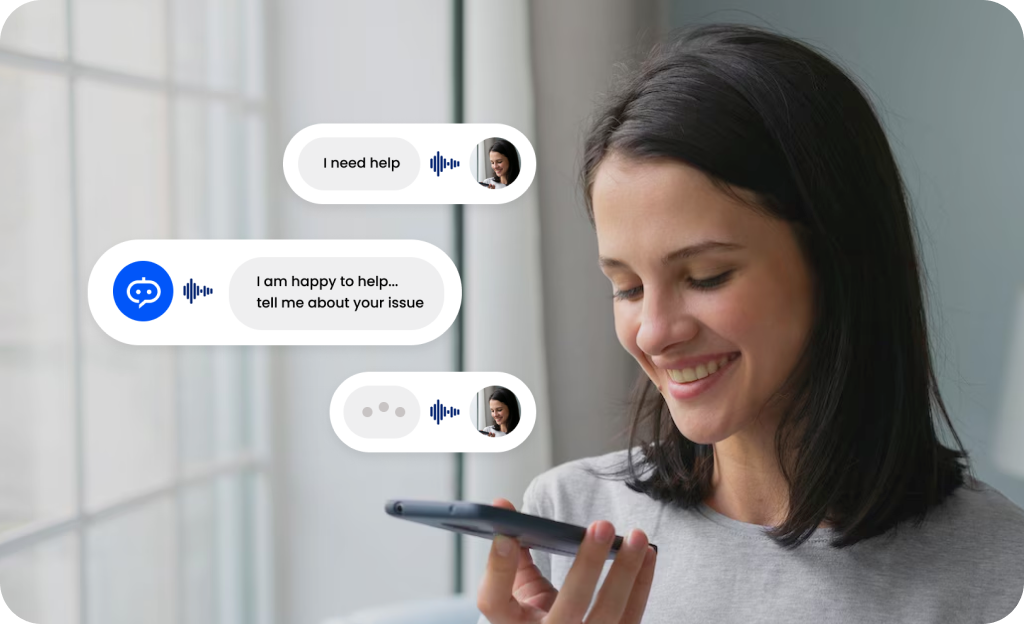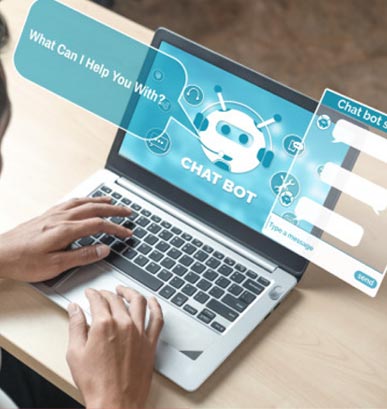#Smart Generative AI Agent
Check out Demo
Generative AI Powered Smart Bot Solution
Omni-Channel Bots – Deploy on Chat, Voice, Email, Instagram, Facebook, WhatsApp and Even SMSCheck out Demo

Trusted by hundreds of leading companies
























×
Check out the Enterprise Grade AI Agent Powered by Gen AI. No Setup Fees.
9 Best Practices for chatbot Adoption
We already know that chatbots have become the new panacea for the Businesses, let’s also learn some of the Best Practices from the experts who run their delivery, implementation and the entire show day in and day out. Streebo, an IBM Business Partner, a small automation company based out of Houston, TX reveals their secret 9 best practices that makes their solution smooth, easy and powerful at the same time!

1
Phased Adoption
Adopt a phased approach to chatbot implementation. It is recommended that enterprises start out with a Minimum Viable Product (MVP) which would encompass automating of repetitive, tedious tasks and perhaps most expensive tasks (performed by human agents) such as password reset, account unlock etc. The successful implementation of an initial pilot often paves the way to a logical progression of features/functionality to derive maximum business value.
2
Identification of Key Use Cases
While planning out the phased implementation, ensure that the first few use cases provide the most ROI and address the audience’s pain points. A successful and most complex MVP often does the heavy lifting of an entire project initiative and leads the way to a breezy implementation for rest of the use-cases and functions.Leveraging analytics to measure adoption and effectiveness
Enterprises should monitor user adoption of chatbots and analyze the user experience through real-time analytics. Numbers, statistics, and analytics have and always provide powerful insights to understand various patterns, trends of user behavior, bot index, usage models and more such telling metrics. This often leads to the necessary tweaks and modifications required along the way to make an effective, intelligent, and powerful Bot for users to use and work with. The effectiveness of chatbots should be monitored through dashboards to improve and optimize bot accuracy, user experience, and overall performance.
3

4
Defining measurable metrics to portion chatbot success
Measurable metrics often aligns with having the right units to measure your success journey. Each organization have their own short-term and long-term goals along with unique metrics and measure used to quantify the success of those yearly goals. Enterprises need to have a well-defined set of metrics that aligns with their Business and IT strategies to measure the success of chatbot initiatives as well.Some of the key metrics that may be included are: a. Percentage of reduction in resolution time by leveraging chatbots.
b. Percentage of reduction in manual effort.
c. Percentage of incidents/requests resolved end-to-end through chatbots.
d. User experience/satisfaction index.
e. Percentage of users leveraging chatbots as their primary channel of communication.
Definition of these metrics upfront often becomes the steppingstone to defining the journey of a Bot implementation project or initiative and often plays a key part in making the whole process lucid, easy-to-implement and successful overall.
c. Percentage of incidents/requests resolved end-to-end through chatbots.
d. User experience/satisfaction index.
e. Percentage of users leveraging chatbots as their primary channel of communication.
Definition of these metrics upfront often becomes the steppingstone to defining the journey of a Bot implementation project or initiative and often plays a key part in making the whole process lucid, easy-to-implement and successful overall.

5
Platform Agnostism
The chatbot needs to be able to integrate with multiple enterprise systems and platforms to provide real business value and processing capabilities. Depending upon the use-cases a chatbot should be integrated with the relevant backends and be made available on all relevant channels such as MS Teams, WhatsApp, Facebook, Slack, Sametime or any other channel of user’s choice!
6
Devising an Enterprise Bot Communication Strategy
Communication shouldn’t be limited to just email: adding banners on the Intranet home page, organizing a quick webinar post rollout etc., can be an effective way to reach the target audience. Users should be informed about subsequent updates/releases using the same approach. Sending out the communications at the right time and creating awareness about the chatbot launch and the functions that the bot supports are crucial elements of an effective Bot Communication strategy.Designing a superior, easy-to-use and a smooth UI/UX experience
In chatbots responses are contextual, personalized, and crafted with a human touch which brings value and liveliness in interaction. Less UI components in the Bot makes users focus on the topic. A good UI/UX strategy, team and design is often a key element in getting the Bot adopted and providing that much needed satisfactory and amazing Bot experience that users are so used to on various available messaging platforms. This crucial element if provided enough attention and focus from the start can become a very important component of a successful Bot implementation. Users won’t and often don’t bear with applications like Bots if they don’t get that quick, easy, and instant experience they are accustomed to! Bot UI/UX design team often finds itself competing with the design of the social media platform itself or the channel they are implementing the Bot for as they are very sleek, user-friendly and design for that high engagement experience from the audience/users! So, it is always wise to devise a UI/UX strategy during the planning phase itself to skip headaches related to failure of the project resulting due to a bad user experience or bad bot adoption rate.
7

8
Acting on the Feedback
Incorporating constant feedback back to the project and solution is another important way to handle any failures. When end users provide any feedback, Businesses should act on it in a timely manner. This ensures Bot adoption as well as project success in the long and short run! Every Business and every Industry has a different set of userbase with varied expectations and practices they are accustomed to. This new technological change (then newly designed Bot solution) should also be wary of those habits, customs, and expectations. A good feedback mechanism ensures these get translated into Bot’s design, features and overall ethos to give users a seamless experience they are looking for!
9
Change Management
Lastly, an important pitfall that enterprises need to guard against is the risk of organizational inertia to change. This can be avoided by leveraging a two-pronged approach:a. A top-down approach to drive chatbot adoption where buy-in from the business leadership trickles down to individual business units.
b. A bottom-up approach to evangelize the benefits of chatbots and drive a greater adoption among senior employees





